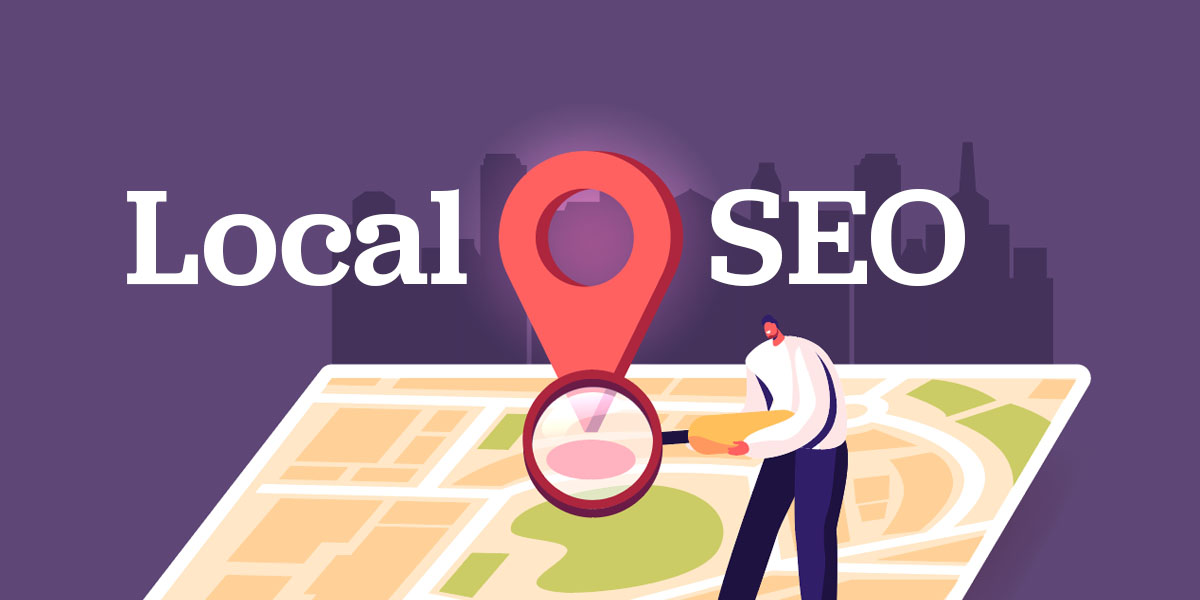Local SEO For Nonprofits
Elin Enrooth | June 2022

As a nonprofit organization, community engagement and involvement are among the most critical aspects of your operation. But what if you don’t show up when community members search for organizations in their area? Even if you do, have you wondered how to maximize your reach? Local search engine optimization (SEO) can reap huge benefits for your organization.
Any organization that serves a specific geographic area can benefit from local SEO. Local SEO is the process of optimizing your online presence for local search. This includes both on-page and off-page elements, like directory listings and online reviews. By optimizing for local search, you will increase your chances of showing up at the top of the results when someone searches in your area.
How does local SEO work?
When a user conducts a search, Google scans through its index to provide the best results for that query. If the query contains local intent, Google will show local results, even if the search didn’t contain a specific city or state keyword.
Google uses a different set of ranking factors to rank local results, including:
- The user’s location
- Google Business Profile
- NAP citations
- Online reviews
The Map Pack
The Map Pack is a set of three local business results that appear at the top of the search results.
With local SEO, search location and intent are important. Local Pack results can completely differ from one mile to the next.
For example, if someone searches for “coffee shop” in Minneapolis, Google will tailor the results to where that person’s located. The same search performed a few blocks away can result in a different set of results. If you only track your local rankings from a single location, you’ll only see a small sample.
Google’s traditional ranking factors still apply to local SEO. In fact, Google confirmed that rankings in the organic SERPs impact local rankings. This means the higher you rank in the organic results, the higher you’ll rank in the Map Pack.
Google Business Profile
To appear in the Local Pack, you must claim your business listing in Google Business Profile (GBP). GBP is a free Google listing for organizations that allows you to customize how your organization appears in local search results. In GBP, you can share posts, respond to messages from users, update your contact information and hours of operation, and more.
In GBP, consistency is of the utmost importance. When a local organization has one address listed in their GBP and another on the website, that’s a huge red flag to Google. If your organization changes its name, location, or phone number, update this info in GBP and all citations. Also, double-check that your organization’s address is the exact same on your GBP and everywhere it shows up. To Google, “Avenue” and “Ave.” are inconsistent.
NAP Citations
NAP (name, address, and phone number) citations are another local SEO ranking signal. Google emphasizes the importance of displaying consistent information across the web. Google uses NAPs to confirm that your business information is correct. This means that in all instances, your organization’s name, phone number, and address should be the same. If there is inconsistency, Google will place less authority on your listing and you’ll rank lower in search results.
Your goal should be to have consistent NAP citations on as many reputable websites as possible. First, start by searching for your business on Google.
Once you have a list of existing citations, find those that aren’t correct. Make sure to note the current NAP and any old NAP information so that you can find outdated citations. The next step is to correct as many as you can. Some listings can be updated manually and some may require you to reach out to the owner of that site to update your information.
Next, work on growing your number of citations. Make sure you have a listing on Yelp, FourSquare, Angie’s List, and any other applicable directories. When you’ve confirmed that you have a listing on all the big sites, start to reach out to local sites. To determine which sites to reach out to, enter competitors into the Backlink Gap feature in Semrush and note which sites are linking to your competitors and not you.
Reviews
The most powerful referral tool is word of mouth. Consumers trust reviews as much as personal recommendations. Positive reviews will help your organization rank higher in the search results. This is because Google uses reviews as a local ranking signal.
Online reviews provide social proof to other potential customers. Social proof is the level of credibility that the public provides to a service or product. The more people that use a service, the more likely others are to follow.
You must ask users to review your organization whether that be on Google, Facebook, or elsewhere. There are many review management tools available that can help you with this. Grade.us is a tool that can help you request and respond to reviews.
Of course, there’s always the possibility of a customer leaving a bad review. Customers are actually more likely to leave a review after a negative experience. This is why it’s important to request feedback as it will take more effort to gather positive reviews.
Whether a user leaves a positive or negative review, make sure to respond. Personalize each response to show both the customer and Google that you care.
Boost your local search ranking
Optimizing for local SEO will increase your visibility in your community, allowing you to reach users that are most likely to engage with your organization.

